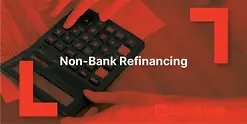The True Cost of Refinancing: What New Zealand Homeowners Need to Know
 By
Trent Bradley
·
15 minute read
By
Trent Bradley
·
15 minute read

Refinancing your mortgage can save you thousands of dollars over the life of your loan, but it's not free. Understanding the true cost of refinancing is essential for making an informed decision about whether the benefits outweigh the expenses. Many New Zealand homeowners focus exclusively on the potential interest savings while underestimating or overlooking the upfront costs involved.
Key Takeaways
- Total refinancing costs typically range $1,750-$3,000 for straightforward situations without break fees, but can exceed $11,000+ when exiting fixed-rate mortgages early with substantial break fees—comprehensive cost calculation is essential before proceeding
- Major cost components include application fees ($0-$800), legal/conveyancing costs ($600-$1,500), property valuations ($0-$1,000+ depending on method), break fees (potentially $0-$20,000+), discharge fees ($200-$500), and LINZ registration fees (~$200)
- Break fees represent the largest variable cost, calculated based on difference between your fixed rate and current wholesale rates—when rates have fallen significantly since you fixed, break fees can reach tens of thousands of dollars potentially making refinancing uneconomical
- Calculate break-even point by dividing total refinancing costs by monthly interest savings—if total costs are $3,000 and you save $250 monthly, you'll break even in 12 months with all subsequent savings being pure benefit over remaining loan term
- Strategic timing dramatically reduces costs: refinancing when fixed terms naturally expire eliminates break fees entirely, shopping around for legal providers saves $200-$500, and negotiating fee waivers with lenders (particularly for strong borrowers with high equity) can reduce or eliminate application and discharge fees
- High refinancing costs may still be justified when: consolidating high-interest debt saving thousands monthly, accessing critical equity for essential purposes, escaping unfavorable loan terms with excessive ongoing fees, or securing fixed rates before significant anticipated rate increases
This comprehensive guide breaks down every cost you're likely to encounter when refinancing your home loan, helps you calculate your total investment, provides strategies for minimizing expenses, and shows you how to determine whether refinancing makes financial sense after accounting for all fees.
Breaking Down the Major Costs
Refinancing involves several distinct categories of costs, each serving a different purpose in the process. Understanding what you're paying for helps you evaluate whether these costs are reasonable and necessary.
Application Fees
Most lenders charge an application fee to cover the administrative costs of processing your refinancing application. These fees typically range from zero to eight hundred dollars, depending on the lender and loan type. Some lenders waive application fees during promotional periods or for borrowers with strong financial profiles, while others charge standard fees regardless of circumstances.
Application fees cover the cost of assessing your application, conducting credit checks, verifying your income and employment, and processing your loan through their systems. While several hundred dollars might seem significant, it's usually one of the smaller costs in the overall refinancing picture.
Some lenders advertise "no application fee" refinancing, which can be genuinely free or may simply mean the cost is built into slightly higher interest rates or other fees. Always look at the total cost picture rather than focusing on individual fee components.
Legal Fees and Conveyancing Costs
Legal work is essential for refinancing and typically represents one of your larger expenses. Your lawyer or conveyancer handles discharging your existing mortgage, preparing and reviewing new loan documentation, registering your new mortgage with Land Information New Zealand, conducting property title searches, and ensuring all legal requirements are met.
Legal fees for straightforward refinancing typically range from six hundred to fifteen hundred dollars, though complex situations can cost more. Factors affecting legal costs include the complexity of your title, whether multiple parties are involved, whether property or ownership changes are occurring simultaneously, and your location, as lawyers in major cities often charge more than those in smaller towns.
Shop around for legal quotes, as fees vary significantly between providers. However, the cheapest lawyer isn't necessarily the best choice. Consider their experience with mortgage refinancing, their responsiveness and communication style, and whether they're on your lender's approved panel, which can sometimes streamline the process.
Property Valuation Costs
Your new lender requires a current valuation of your property to confirm its market value and assess their lending risk. Valuation costs vary depending on the method used and your property characteristics.
Desktop or automated valuations are the least expensive option, typically costing nothing to two hundred dollars. These use recent sales data and property databases to estimate value without a physical inspection. They're suitable for standard properties in active markets with plenty of comparable sales data.
Drive-by valuations involve a valuer viewing the property exterior without entering, typically costing between two hundred and four hundred dollars. Full registered valuations include comprehensive interior and exterior inspection by a registered valuer, resulting in a detailed report. These typically cost six hundred to one thousand dollars or more, depending on property location, size, and complexity.
Your lender determines which valuation method is required based on your loan-to-value ratio, property type and location, loan amount, and whether the property has any unusual characteristics. You generally have no control over this decision, though you pay for the valuation regardless of which method the lender requires.
Break Fees for Fixed-Rate Mortgages
If you're exiting a fixed-rate mortgage before your term expires, break fees can represent your largest refinancing cost. These fees compensate your current lender for the interest income they expected to receive over the remainder of your fixed period.
Break fees are highly variable and depend on the difference between your fixed rate and current wholesale rates for the remaining term, how much time remains on your fixed term, and your remaining loan balance. They can range from zero to tens of thousands of dollars.
When current interest rates are higher than your fixed rate, break fees are typically zero or minimal because your lender can reinvest at better rates. When rates have fallen significantly since you fixed, break fees can be substantial because your lender faces losses reinvesting at lower rates.
Calculate break fees carefully and get written quotes from your current lender before committing to refinancing. These fees can make or break the financial case for refinancing, particularly if you're relatively close to your fixed term expiration.
Mortgage Discharge Fees
Your current lender typically charges a fee for discharging your existing mortgage and releasing their security interest in your property. Discharge fees generally range from two hundred to five hundred dollars, though some lenders charge more.
This fee covers the administrative work of preparing discharge documentation, coordinating with your lawyer, and updating their records. While it might seem unfair to pay your old lender to leave them, discharge fees are standard industry practice in New Zealand.
Some lenders waive discharge fees during promotional periods or as a courtesy to long-standing customers, particularly if you're refinancing to a related financial product or staying within the same banking group. It never hurts to ask whether your lender will waive or reduce this fee.
Land Information New Zealand Registration Fees
Registering your new mortgage and discharging your old one with Land Information New Zealand incurs small but unavoidable fees. These government charges typically total around two hundred dollars, though the exact amount depends on the number of instruments being registered.
Your lawyer includes these fees in their overall bill, so you won't pay them separately. These are statutory fees set by the government and cannot be negotiated or avoided.
Ongoing Account Fees
While not technically a refinancing cost, it's important to consider any ongoing fees your new lender charges. These might include monthly account-keeping fees, annual package fees, fees for specific features like offset accounts or redraw facilities, and fees for making certain types of transactions or changes.
Compare ongoing fees between lenders when evaluating refinancing options. A lender with a slightly higher interest rate but no ongoing fees might actually cost less over time than a lender with a marginally lower rate but two hundred dollars in annual fees.
Hidden and Unexpected Costs
Beyond the obvious major costs, several potential expenses catch homeowners by surprise if they're not prepared.
Rate Lock or Rate Hold Fees
If you want to lock in a specific interest rate while your application is processing, some lenders charge rate lock fees. These guarantee your rate won't increase before settlement, even if market rates rise. Rate lock fees typically range from zero to several hundred dollars depending on the lock period and loan amount.
Not all lenders charge for rate locks, and in stable rate environments, locking your rate might not be necessary. However, if rates are rising or volatile, a rate lock can protect you from unfavorable rate changes during the application process.
Establishment or Setup Fees
Some lenders charge establishment fees for setting up your new loan in their systems. These fees can range from nothing to several hundred dollars. Establishment fees are separate from application fees and cover different aspects of getting your loan operational.
Always ask for a complete fee schedule from your lender showing all possible charges. Some lenders bundle multiple small fees into a single establishment or processing fee, while others itemize each charge separately.
Insurance-Related Costs
When you refinance, you may need to update or obtain new insurance policies. Your new lender might require updated building insurance with them listed as an interested party, potentially incurring administration fees. If you're accessing significant equity, you might need increased insurance coverage to match your higher loan amount.
Some lenders require life insurance, income protection insurance, or mortgage protection insurance, particularly if you have a high loan-to-value ratio or other risk factors. While insurance isn't technically a refinancing cost, timing these updates with your refinancing can create additional upfront expenses.
Credit Report Fees
While most lenders include credit check costs in their application fees, occasionally you might be charged separately for credit reports. These are typically small, around twenty to fifty dollars if charged separately, but they're worth being aware of.
Multiple Application Costs
If you apply to several lenders for pre-approval or formal applications, you might incur multiple sets of application fees. Strategic applicants minimize this by seeking pre-approval from multiple lenders before committing to formal applications with just one or two finalists.
However, if your first choice lender declines your application, you'll need to apply elsewhere, potentially paying a second set of fees. This risk is higher for borrowers with complex financial situations or borderline serviceability.
Calculating Your Total Refinancing Cost
To properly evaluate whether refinancing makes sense, you need a comprehensive tally of all costs involved.
Creating Your Cost Summary
List every fee and cost you'll encounter including application fees from your new lender, legal and conveyancing costs, property valuation charges, break fees if exiting a fixed term early, discharge fees from your current lender, Land Information New Zealand registration fees, and any other miscellaneous charges.
For uncertain items like break fees or valuation costs, obtain written quotes rather than estimates. This ensures your calculations are based on accurate information rather than assumptions that might prove wrong.
Example Cost Calculations
Let's examine several realistic scenarios to illustrate typical total costs for different refinancing situations.
Consider Emma, who's refinancing at the end of her fixed term with no break fees. Her application fee is three hundred and fifty dollars, legal fees are eight hundred dollars, a desktop valuation costs one hundred dollars, her discharge fee is three hundred dollars, and LINZ registration fees are two hundred dollars. Her total refinancing cost is one thousand seven hundred and fifty dollars—a relatively modest investment for accessing better rates and terms.
Now consider James, who's breaking his fixed term eighteen months early to refinance. His application fee is four hundred dollars, legal fees are nine hundred dollars, a full registered valuation costs seven hundred and fifty dollars, his break fee is eight thousand five hundred dollars, his discharge fee is three hundred and fifty dollars, and LINZ registration fees are two hundred dollars. His total refinancing cost is eleven thousand one hundred dollars—a substantial investment that requires significant interest savings to justify.
Finally, consider Sarah, who's refinancing to consolidate debt and access equity. Her application fee is five hundred dollars, legal fees are one thousand two hundred dollars due to increased loan complexity, a registered valuation costs eight hundred dollars, she has no break fees as she's on a floating rate, her discharge fee is three hundred dollars, and LINZ registration fees are two hundred dollars. Her total refinancing cost is three thousand dollars, which she considers reasonable given she's also accessing thirty thousand dollars in equity and consolidating twenty thousand dollars in high-interest debt.
These examples show how dramatically total costs can vary depending on individual circumstances, particularly whether break fees are involved.
Comparing Costs Against Benefits
Understanding your costs is only half the equation. You must compare these costs against the benefits refinancing provides to determine whether it's financially worthwhile.
Calculating Interest Savings
Determine your monthly interest savings by comparing your current mortgage payment against your new payment at the refinanced rate. Multiply this monthly saving by the number of months remaining on your loan to calculate total potential interest savings over the life of the loan.
For example, if refinancing saves you two hundred and fifty dollars monthly and you have twenty years remaining on your mortgage, your total potential savings is sixty thousand dollars over the full term. This provides valuable context for evaluating whether spending three thousand dollars upfront to achieve sixty thousand dollars in savings makes sense.
Determining Your Break-Even Point
Calculate how many months it will take to recover your refinancing costs through interest savings. Divide your total refinancing cost by your monthly interest savings to find your break-even point.
Using the previous example, if your total cost is three thousand dollars and you save two hundred and fifty dollars monthly, your break-even point is twelve months. After one year, you've recovered your investment and everything after that represents pure savings.
If you're confident you'll remain in your property well beyond your break-even point, refinancing makes financial sense. If you might sell or your circumstances might change before breaking even, refinancing becomes more risky.
Factoring in Debt Consolidation Benefits
If you're consolidating high-interest debt through refinancing, calculate those additional savings separately. Paying twenty percent interest on credit card debt versus six percent interest on mortgage debt creates immediate, substantial savings beyond any interest rate reduction on your existing mortgage.
These debt consolidation savings can justify refinancing costs even if your mortgage interest rate improvement is modest, because you're achieving savings through multiple mechanisms simultaneously.
Considering Non-Financial Benefits
Some benefits don't appear directly in financial calculations but still provide value. Access to better loan features like offset accounts or flexible repayment options, improved customer service and easier account management, peace of mind from securing a better rate, and simplified financial management from consolidating debts all offer value even if they don't show up as dollar savings.
While these factors shouldn't override strong financial analysis suggesting refinancing doesn't make sense, they can tip the balance in borderline cases or validate decisions that already make financial sense.
Strategies for Minimizing Refinancing Costs
Several approaches can help reduce your total refinancing expenses, making the decision more financially attractive.
Time Your Refinancing Strategically
The single most effective cost-saving strategy is refinancing when your fixed term naturally expires, completely avoiding break fees. Start shopping for new rates three to six months before your term ends to ensure you're ready to transition seamlessly.
If break fees are moderate but you're close to your fixed term expiration, waiting a few extra months to avoid these fees often makes more financial sense than paying thousands to refinance immediately.
Shop Around for Service Providers
Legal fees vary significantly between providers, so obtain quotes from multiple lawyers or conveyancers. Ask mortgage brokers which lawyers they recommend for efficient, cost-effective service.
Similarly, if you have any control over valuation providers, compare fees and turnaround times. Sometimes paying slightly more for faster service saves money by reducing overall timeline and allowing you to lock in favorable rates sooner.
Negotiate Fee Waivers
Don't assume all fees are non-negotiable. Ask your new lender if they'll waive application fees, particularly if you're a strong borrower or bringing substantial business to them. Request that your current lender waive or reduce discharge fees, especially if you've been a reliable customer for many years.
Ask whether your lawyer can offer discounted rates for straightforward refinancing work, particularly if you've used their services before or were referred by someone they work with regularly.
Banks particularly want to attract borrowers with high equity, excellent credit, and substantial loan amounts. If you fit this profile, you have leverage to negotiate fee reductions.
Use Promotional Offers
Many lenders run promotional periods offering reduced or waived fees to attract new customers. Application fees might be waived, legal fees might be covered by the lender, or cashback offers might effectively reimburse some of your costs.
Watch for these promotions, but always evaluate the total package rather than just fee waivers. A lender offering free application and legal fees but charging a higher interest rate might cost more over time than a lender with modest fees but an excellent rate.
Bundle or Package Services
Some lenders offer better deals when you bundle multiple products like moving other banking services to their institution, consolidating credit cards or personal loans, taking insurance products through them, or bringing investment accounts or KiwiSaver to their platform.
While you should only take products you genuinely need and that make financial sense independently, legitimate bundling opportunities can generate savings or fee waivers that reduce overall refinancing costs.
Consider Refinancing with Your Current Bank
While switching banks for better rates is often beneficial, refinancing with your existing lender can sometimes reduce costs. You might avoid or reduce valuation costs if your lender has recent valuation information, potentially reduce legal complexity and costs, leverage your customer relationship to negotiate fee waivers, and simplify the overall process.
This approach works best when your current bank is willing to match or beat competitors' rates to retain your business. If they won't offer competitive rates, any cost savings are outweighed by ongoing higher interest charges.
When High Costs Might Still Be Worth It
Sometimes refinancing makes sense despite high costs, particularly in specific circumstances.
Accessing Critical Equity
If you need to access equity for important purposes like essential home repairs, medical expenses, or genuinely valuable investment opportunities, refinancing costs might be justified even if interest rate savings are modest.
Compare refinancing costs against alternative ways of accessing the same capital. If a personal loan would charge fifteen percent interest while accessing equity through refinancing costs six percent plus a few thousand in fees, the refinancing approach is clearly superior despite upfront costs.
Escaping Unfavorable Loan Terms
If your current mortgage has highly restrictive terms, excessive ongoing fees, or other unfavorable conditions, paying refinancing costs to escape these problems might be worthwhile even without significant interest rate improvements.
Calculate the ongoing cost of staying in your current mortgage versus the one-time cost of refinancing to better terms. If restrictive terms are costing you hundreds of dollars annually in lost flexibility or excess fees, a few thousand dollars to escape them can pay for itself within several years.
Consolidating Severe Debt Problems
When you're struggling with overwhelming high-interest debt, refinancing to consolidate might be worth substantial costs because the alternative of continuing with high-interest debt is financially catastrophic.
If you're paying thousands of dollars monthly in high-interest charges, even significant refinancing costs can be recovered within months through debt consolidation savings. The immediate cash flow relief might also prevent serious financial hardship or bankruptcy.
Securing Fixed Rates Before Significant Increases
If you're currently on a floating rate and interest rates are rising rapidly, the cost of refinancing to lock in a fixed rate might be justified to protect against further increases, even if current break-even calculations seem marginal.
This is more of a risk management decision than a pure financial optimization. You're paying refinancing costs as insurance against potentially significant future rate increases that would cost far more than your refinancing investment.
Making Your Final Decision
With a complete understanding of costs and benefits, you can make an informed refinancing decision.
Run Comprehensive Scenarios
Calculate your break-even point under various assumptions. Consider what happens if you sell your property at different timeframes, model different potential interest rate movements, and factor in both financial and non-financial benefits.
This scenario analysis helps you understand the risks and rewards rather than relying on a single optimistic projection.
Seek Professional Advice
Consider consulting with a mortgage adviser who can provide objective analysis of whether refinancing makes sense for your specific situation. They can help you identify all costs, compare benefits accurately, spot alternatives you haven't considered, and provide perspective based on experience with hundreds of other refinancing situations.
At Luminate Financial Group, we provide comprehensive cost-benefit analysis for every refinancing inquiry. We help you understand all costs upfront with no surprises, calculate accurate break-even points and long-term savings projections, identify opportunities to minimize costs, and ultimately determine whether refinancing makes financial sense for your circumstances.
Our goal isn't to convince you to refinance but to ensure you have complete, accurate information to make the best decision for your financial future. Sometimes that means recommending you wait, explore alternatives, or stay with your current mortgage. We succeed when you make informed decisions that genuinely benefit you, not when we process the maximum number of applications.
Frequently Asked Questions
How much should I budget for refinancing costs in New Zealand?
Budget $2,000-$4,000 for standard refinancing without break fees covering: application fees ($300-$600), legal/conveyancing costs ($600-$1,500), property valuation ($200-$800), discharge fees ($200-$500), and LINZ registration (~$200). If exiting fixed terms early, add break fees ranging $0-$20,000+ depending on rate differential and remaining term—obtain written break fee quotes from your current lender before proceeding. Desktop valuations ($0-$200) cost less than full registered valuations ($600-$1,000+), with lenders determining required method based on your LVR and property type. Budget conservatively at upper range to avoid surprises, with total costs occasionally reaching $5,000-$7,000 for complex situations involving high break fees, full valuations, and increased legal complexity.
What are break fees and how are they calculated?
Break fees compensate your current lender for lost interest income when you exit fixed-rate mortgages before term expiry, calculated based on: difference between your fixed rate and current wholesale rates for remaining term, time remaining on fixed period, and outstanding loan balance. When current rates are HIGHER than your fixed rate, break fees are typically zero (lender can reinvest at better rates). When rates have FALLEN significantly, break fees can be substantial—example: $400,000 loan, 2 years remaining on 6.5% fixed rate when current rates are 5.2% might generate $10,000-$12,000 break fee. Request written break fee quotes valid 3-7 days from your current lender before committing to refinancing, as these fees can exceed first-year interest savings making refinancing uneconomical despite better rates available.
Can I negotiate or reduce refinancing fees with my lender?
Yes—many fees are negotiable, particularly for strong borrowers with high equity (LVR under 70%), excellent credit history, and substantial loan amounts ($400,000+). Negotiation opportunities include: application fee waivers (many lenders waive for new customers during promotions), discharge fee reductions from current lender (especially long-standing customers), legal fee contributions where lenders cover $500-$1,000 toward legal costs, and break fee waivers or reductions when refinancing within same banking group. Strategy: obtain pre-approvals from 2-3 lenders, then approach your preferred lender presenting competitor offers and requesting fee matching or waiving. Banks prioritizing customer acquisition over retention often offer better deals—leverage this by demonstrating you're comparison shopping rather than accepting first offer.
Is refinancing worth it if my break fees are $8,000-$10,000?
costs within reasonable timeframes. Calculate: if refinancing saves $400 monthly, break-even point is 20-25 months—worthwhile if you're confident holding property 3+ years after refinancing. If savings are only $150 monthly, break-even extends to 53-67 months (4.5-5.5 years)—marginal unless planning very long-term hold. However, high break fees may justify refinancing when: consolidating high-interest debt saving $500-$1,000+ monthly beyond mortgage savings, accessing critical equity for essential purposes impossible through other means, or escaping highly restrictive loan terms costing hundreds monthly in lost flexibility. If close to fixed term expiry (6-12 months remaining), waiting typically proves more economical than paying substantial break fees for modest additional time at better rates.
What's the difference between desktop, drive-by, and full registered valuations?
Desktop valuations ($0-$200) use sales databases and property information without physical inspection—suitable for standard properties in active markets with strong comparable sales data and low LVRs (under 70%). Drive-by valuations ($200-$400) involve exterior viewing without interior access—appropriate for straightforward properties requiring more verification than desktop methods. Full registered valuations ($600-$1,000+) include comprehensive interior/exterior inspection by registered valuer producing detailed reports—required for higher LVRs (over 70-80%), unusual properties (rural, architecturally distinctive, large sections), properties in areas with limited sales data, or when lenders need maximum confidence in security values. Lenders determine required method—you cannot choose cheaper options if lenders require comprehensive valuations. Remote or unique properties in places like Queenstown may require $1,200-$1,500+ registered valuations due to limited valuer availability and complexity.
Should I refinance if I might sell my property within 2-3 years?
Refinancing with potential 2-3 year sale timelines requires careful break-even analysis considering all costs and realistic timeframes. If break-even point is 12-18 months and you're confident holding minimum 24-36 months, refinancing makes sense—you'll achieve 12-24 months of savings before selling. If break-even exceeds 24-30 months, refinancing becomes marginal—small savings justify effort and cost. However, exceptions exist: debt consolidation providing immediate substantial cash flow relief, accessing equity for purposes impossible otherwise, or escaping truly problematic loan terms may justify refinancing despite uncertain timelines. Consider: transaction costs when selling ($20,000-$40,000+ for agent commissions and legal fees) already create sunk costs—adding $3,000-$5,000 refinancing costs matters less if sale is definite. Strategy: if sale is uncertain but possible, refinance if break-even is under 18 months; if sale is highly likely within 24 months, refinancing probably isn't worthwhile unless consolidating debt or accessing critical equity.
Want to understand the true cost of refinancing for your situation? Contact Luminate Financial Group today for a detailed cost-benefit analysis. We'll help you calculate all expenses, determine your break-even point, and decide whether refinancing makes financial sense.

Trent Bradley
Trent Bradley is a New Zealand financial advisor specializing in property-backed finance and investment consulting. With over 26 years of experience running his mortgage broking business, he has helped wholesale investors access high-yield property-backed loan opportunities. For the past 12 years, Trent has led Luminate Finance, a New Zealand finance company dedicated to connecting investors with secure property investment solutions.
































